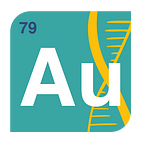Enhanced DNA Nanostructures Improve Cancer Nanomedicine Treatment
Neil Tristan Sacayanan
Cancer still remains as one of the deadliest diseases in the world. In 2020, approximately five million deaths around the world were recorded by the World Health Organization related to varying types of cancer. However, until this day, the synthesis of multi-functional cancer medicine has not yet been accessible for public use.
In recent years, the use of DNA Nanostructures for cancer treatment is being studied. In connection to this, researchers from the Center for Multifunctional Biomolecular Drug Design (CEMBID) at Aarhus University led by Professor Kurt Gothelf have recently discovered the production of stable DNA nanostructures with 4-way junctions (4WJ). These were found to have the ability to bind and assemble biomolecules into multifunctional structures, which increases the specificity of drug delivery to specific sites where they are needed.
One major problem faced by DNA nanostructures was its high speed degradation in the blood which diminishes its specific drug delivery mechanism. However, Professor Gothelf and his team resolved this by using artificial oligonucleotides called acyclic L-threoninol nucleic acid (aTNA). The incorporation of this artificial oligonucleotide replaces the sugar molecule (deoxyribose), which is the natural building block of DNA structures, with an artificial sugar molecule (acyclic L-threoninol), which in turn contributes to an increased stability of the nanostructure.
Moreover, it was also shown by the team of researchers that the aTNA was not toxic to cells and did not promote a nonspecific immune response. In addition, when biomarkers specific for breast cancer were incorporated to the enhanced DNA nanostructure, it was shown that the modified 4WJ structure may prove to be effective in directing cancer drugs to the desired cells. Upon further modification of the enhanced nanostructures, its viability in the blood stream has increased significantly, making it viable also for extended use in the body.
Aside from the aforementioned benefits of the newly synthesized DNA nanostructure, the researchers also mentioned that their nanostructure may be of great help in evaluating optimum cancer treatment. As such, the researchers said that the activities of different combinations of cancer-degrading biomolecules may be screened with greater speeds and efficiency, providing crucial information as to what treatment may best work for a specific cancer type.
The work was performed in collaboration with the groups of Jørgen Kjems and Ken Howard, who are also part of CEMBID, and the funding was provided by the Novo Nordisk Foundation with DKK 60 million in 2018 and runs until 2024.
